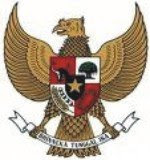Riau Archipelago
Riau Archipelago with Tanjung Pinang as the capital city Is blessed of a lot potential tourism objects, beautiful beaches, and culture attractions. It is located at the crossroads of one of the world’s oldest and busiest maritime routes and well reputes as an ideal stop over for trade and commerce. Riau Archipe¬lago was once home a sea gypsies cruising its rich mangroves forest and waterways. Moreover, it was on this island that the Sultan of Malacca found refuge from Portuguese attack in the 16th century, mapping tales of the legendary importance when Bintan thenceforth grew as the center of the powerful Johor Riau Sultanate. 
Jl. Basuki Rahmat 17 Tanjung Pinang, Phone/Fax (0771) 315822 http://www.disparsenibud-kepri.com.
Batam Tourism Promotion Board :
Sekupang Ferry Terminal Jl.R.E. Martadinata, Phone. (0778) 322871, 322875 Fax.322898
Riau Islands can easily reached by air or sea from Jakarta and Pekanbaru directly. Batam and Bintan have international shiplines and flight. It is only 45 minutes away from Singapore by ferry.
Perahu Naga (Dragon Boat) Festival in every October covers a distance of 400 meters with both domestic and foreign contestants. It is held along the Tanjung Pinang coast facing Penyengat Island. It features cultural performances, swimming contest and traditional diving challenge.
Tanjung Pinang
Tanjung Pinang is a busy town on Bintan Island, now as a capital of Riau Archipelago. It has a Museum on Jl. Katamso. A large section of the old part of the town was built in traditional local fashion, on stilts, over the water. Tanjung Pinang City is located at about 10 km from the airport. This town also has 2 ports, Sri Bintan Pura in Tanjung Pinang and Sri Bayintan in Kijang. Tanjung Pinang Serves flight to Pekanbaru and Natuna.
Batu Bedaun Beach
Batu Bedaun Beach is very famous among the teenagers in Dabo Singkep. The beach situated 20 km from Dabo. This white sandy beach is very clean, with blue sea and small wave.
Daik
Daik is a small town but has many historical relics of Riau Lingga kingdom as in the Penyengat Island. We can reach the town by speedboats from Tanjung Pinang. In Lingga Island there are also many variation of tropical plantation and marine water fish species that cannot be found in other pla¬ces. Other interesting objects is Mount Daik with 3 peaks.
Senayang Island
Senayang Island. Boat cruising touring the waters between the islands is among potential attractions. Some real and thrilling adventures are available since there are many islands surrounding Senayang and excellent packages include cycling, bush wacking, swimming, snorkeling and diving.
Tambelan Island
Tambelan Island is about 200 km away from Tanjungpinang. There are only six villages, which are spread over a few islands, with a total population of about 4,000. As is to be expected, the environment here is largely unspoilt, and the scenery is truly magnificent. One of the most interesting of natural attraction in this island is watching turtles laying their eggs in great number that protected by local peoples.

Bintan Island
Bintan Island. International investors have developed many new hotels, integrated world-class resorts, international golf courses on the island of Bintan. Other deve¬lopments include industrial parks, medical, commercial and banking facilities that are readily available to any visitors. During your visit to Riau Archipelago will not be bored or uninspired because there are many other interesting places like Pasar Ikan (Fish Market) where fresh, cheap seafood and ve¬getables are sold. There are also the Akau (Night Market), Pelantar (Water Villages) and shops selling local handicraft, natural attraction like watching the turtles laying their eggs or fishing on the Kelong.
Trikora Beach
Trikora Beach is about 40 kilometers south of Tanjung Pinang on the eastern side of the island. Good beaches are also found on the islands of Terkulai and Soreh, about an hour away by boat.
Natuna Archipelago
Natuna Archipelago is a part of the vast province, which embraces all of the islands off the Riau mainland. The main island clusters of the Natuna archipelago are: Anambas, Natuna, South Natuna and Tambelan. Matak Island at present serves as a base for offshore oil exploration. Colourful co¬rals and reef fish are found in the waters surrounding these islands. South Natuna comprises the islands Serasan, Panjang and Subi. The surf is strong on these islands and the scenery impressive. The Tambelan Islands are accessed by boat in 6 hours from Pontianak in West Kalimantan or from Tanjung Pinang in 16 hours. Turtles habitually come to some of the beaches to depo¬sit their eggs in the warm sand. There are probably more turtles than people on these islands. Natuna is located in area of South China Sea with the geographical location passed by international shipping and coast lines. Natuna’s Ranai airport has length of 2,550 metres and Matak airport with length basis of 1,700 metres. Natuna’s seaport are Lampa (100 x 10 sqm) and Penagih (50 x 8 sqm).
Karimun Island
Karimun Island is one of the most important islands in the Riau Archipelago, due to its thriving economy and proximity to Singa¬pore. Tanjungbalai Karimun is a medium-sized town, with a large Chinese community and shops selling a large variety of imported items. Lies in a shipping line in Malacca Strait and Singapore, Karimun gateway can be passed by international ferry from and to Malaysia and Singapore.
Sea Gardens
Sea Gardens with beautiful corals and fish are found in the waters around the islands of Mapor, Abang, Pompong, Ba¬lang and Tanjung Berkait.

Batam Island
Batam Island is a very strategic island designated as a center of industry, tourism and trade. It lies close to Singapore. The Nongsa recreational region has international hotels, four golf courses, a marina sports facility and a forest reserve. Batam can be reached in two hours from Tanjung Pinang by ferry and in about half an hour from Singapore.
Pulau Penyengat











